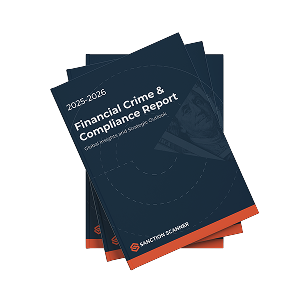Businesses aiming to comply with international regulatory standards while protecting their operations from financial crime and identity fraud now depend heavily on the KYC (Know Your Customer) verification process. The importance of this verification system cannot be overstated by fintech companies, financial services, cryptocurrency exchanges, or even gaming platforms. It promotes openness and increases consumer trust in addition to guaranteeing adherence to Anti-Money Laundering (AML) laws.
What is the KYC Verification Process?
The multi-step procedure used by businesses to confirm the identity, risk profile, and legitimacy of their clients is known as "Know Your Customer" (KYC) verification. In addition to ongoing monitoring throughout the customer relationship, it usually takes place during onboarding. Global AML regulations require this procedure to reduce risks like identity theft, money laundering, and fraudulent transactions.
Recommendation 10 requires all obliged entities to identify and verify customers using trustworthy, independent source documents, data, or information, according to the Financial Action Task Force (FATF).
Why Is KYC Verification Important?
Regulatory Compliance
Following KYC is essential to avoiding severe fines from the government. The KYC process is standardised by important frameworks like the US's FinCEN (Financial Crimes Enforcement Network) directives, Singapore's MAS standards, and the EU's AMLR (Anti-Money Laundering Regulation) in order to preserve accountability and order in financial transactions.
Fraud Prevention & Identity Assurance
Businesses can stop identity theft, money laundering, and other financial crimes by carefully confirming the identities of their customers. The first line of defence against bad actors is thorough KYC.
Reducing Exposure to Fines
Serious financial penalties may be incurred for breaking AML and KYC regulations. For instance, according to National Money Laundering Risk Assessment in 2024 alone, more than $2 billion in AML-related fines were imposed worldwide. Reducing legal risks and related expenses requires a strong KYC procedure.
Building Trust and Transparency
Consumers are more inclined to interact and trust companies that show that they are making an effort to protect their identity and data. A company's commitment to accountability and transparency is demonstrated by an effective KYC system.
The KYC Verification Process: Step-by-Step Guide
Customer Onboarding Trigger:
When a user registers for a service, like an app, exchange, or financial platform, the process starts. Know Your Customer (KYC) protocols begin with this first interaction.
This step activates various KYC workflows that are suited to the service needs and the local regulatory framework, depending on the customer's risk level. Higher-risk clients might be sent straight to more complex verification processes. Low-risk clients, however, might go through a more straightforward procedure.
Identity Data Collection:
Gathering vital client information is crucial. A customer's identity profile is built upon these fundamental details and so they are needed.
More information might be needed for sophisticated use cases. These could include tax identification numbers (TINs), social security numbers (SSNs), or business corporate registration information. Some jurisdictions might also demand proof of address or bank account details to further confirm a person's identity.
Document Verification:
Clients are required to upload official identification documents, such as national ID cards, driver's licenses, or passports.
Technologies like AI-powered optical character recognition (OCR) systems automatically extract and validate information from uploaded documents. Documents can also be cross-checked with national registries or official secure databases.
Biometric Verification (Optional but Increasingly Common)
To make sure a customer is in person and not using pre-recorded images or stolen identities, liveness detection systems use selfies or live video streams.
To add an additional degree of security, this technology compares facial biometric characteristics with the image or information on the uploaded ID. For a smooth and safe onboarding process, biometric verification techniques like voice recognition and fingerprint scanning are being incorporated more and more.
Sanctions & PEP Screening:
Clients are checked against national sanction lists, the UN, OFAC (Office of Foreign Assets Control), and other high-risk watchlists. These lists identify people and organisations engaged in illicit or high-risk activities, like money laundering or terrorism.
Businesses also conduct Politically Exposed Persons (PEP) screening to find people who are more vulnerable because of their political affiliations or roles. In order to ensure that indirect risks are also identified, PEP checks are extended to known associates (RCA) and relatives.
Adverse Media & Watchlist Screening
AI systems search social media, blogs, news websites, and other international media platforms in a variety of languages for instances of unfavourable media coverage or connections to legal infractions.
By offering a thorough picture of potential risks, this procedure assists companies in identifying clients who have a history of legal or reputational problems, such as involvement in fraud, corruption, or other illicit activities.
Risk Scoring:
Depending on a number of variables, such as location, occupation, transaction history, and funding sources, customers are given a risk level.
Customers with clean records and low-risk characteristics, for instance, are processed more quickly. However, those from high-risk areas might be automatically flagged for Enhanced Due Diligence (EDD).
Approval, Escalation, or Rejection
Autoapproval is common for low-risk clients, guaranteeing a seamless onboarding process. Additional analyst review may be necessary for medium-risk clients in order to manually verify specific information, like funding sources or documentation.
High-risk clients go through Enhanced Due Diligence (EDD) to guarantee compliance with regulatory requirements. EDD entails a more thorough examination of their connections, financial activity, and background. Customers may be turned away if there are any warning signs, and if mandated by law, the relevant authorities may be informed.
Recordkeeping & Audit Logs
Depending on the jurisdiction, businesses must keep client data in a secure location for at least five years. All identity information, verification reports, and pertinent correspondence records are included in this.
Time-stamped logs guarantee that companies have a thorough audit trail, which is important in the event of a legal dispute or regulatory inspection. These documents also show adherence to anti-money laundering (AML) rules and data protection laws.
Ongoing Monitoring
Advanced AI systems and automated alerts dynamically update risk levels based on new data; continuous monitoring is crucial for identifying changes in a customer's profile, such as obtaining a new PEP status, showing up on sanctions lists, or being the subject of negative media coverage.
KYC Verification Methods Compared
| Method | Description | Pros | Cons |
| Manual Review | Human-based ID and document checks | High accuracy | Slow, costly, non-scalable |
| Rule-Based Systems | Utilizes basic IF/THEN logic for risk flagging | Simple setup | Prone to false positives |
| AI-Based Verification | Real-time fraud detection, biometric verification | Scalable, adaptive, fast | High implementation costs |
By 2025, over 70% of fintech and crypto platforms are projected to use AI-based KYC systems for onboarding.
Navigating Global Regulatory Requirements
Key Regulators and KYC Mandates
- USA (FinCEN) requires identification and Customer Due Diligence (CDD) under the Bank Secrecy Act (BSA).
- UK (FCA) enforces risk-based KYC measures under the Money Laundering Regulations (MLR) 2017.
- EU (AMLR) implements standardized EU-wide KYC rules by 2024.
- Singapore (MAS) includes tiered KYC systems under Payment Services Notices (PSN02).
- Australia (AUSTRAC) adheres to mandatory KYC under the AML/CTF Act.
Common Challenges in KYC Verification
- A high rate of false positives in name screening can result in needless manual reviews, which cost money and time.
- Analysis and approval of documents can be delayed by manual procedures, which can affect customer onboarding and the user experience in general.
- Variability in customer experience across jurisdictions: Providing a smooth and uniform customer journey is difficult due to regionally different laws and procedures.
- Reliance on antiquated systems not designed to meet KYC requirements in the digital age: The automation and scalability required to meet the demands of contemporary KYC compliance are frequently absent from older systems.
- Limited availability of multilingual adverse media screening tools: Risk assessment is compromised by many systems' inability to reliably screen and analyse adverse media in multiple languages.
Best Practices for KYC Verification
- Use a hybrid strategy: To increase screening accuracy and lower false positives, integrate human analysts with AI-powered systems. For complex cases, this method maintains a human oversight layer while guaranteeing efficiency.
- Use tiering based on risk: Sorting clients into risk categories according to criteria like transaction value, frequency, and intent help immensely. This process speeds up low-risk verifications while enabling more thorough examination of high-risk users.
- Perform recurring re-verifications: To guarantee adherence to changing regulations and to gradually reduce possible risks, re-verifying high-risk clients on a regular basis is recommended.
- Make screening lists local: Include locally pertinent organisations and people in screening lists to adjust compliance procedures to jurisdictional quirks (e.g., UAE-specific sanctions or politically exposed persons).
- Keep thorough records: To give regulators complete traceability and improve overall compliance readiness, make sure that every action is recorded in time-stamped audit logs.
- Make an investment in multilingual resources: Employ cutting-edge technologies that can screen harmful media in several languages, guaranteeing a more thorough and inclusive approach to risk assessment irrespective of regional variances.
Empowering Your KYC Process with Sanction Scanner
Sanction Scanner helps companies by offering creative answers to contemporary KYC problems:
- AI-Powered Systems for False Positive Reduction
- Adverse Media Analysis in Over 45 Languages
- Real-Time PEP & Sanctions Screening
- Audit-Ready Logs and Continuous Monitoring API
Use Sanction Scanner's extensive toolkit to guarantee customer security and compliance.
FAQ's Blog Post
KYC stands for "Know Your Customer." It is a regulatory process used to verify the identity of clients during onboarding.
The KYC process helps prevent identity theft, money laundering, and terrorist financing. It ensures businesses are compliant with financial regulations.
The main steps include collecting identity documents, verifying information, and performing risk assessments. These steps may vary depending on local regulations.
Banks, fintechs, crypto platforms, and other financial institutions must follow KYC rules. Non-compliance can result in heavy fines and sanctions.
Common documents include a government-issued ID, proof of address, and sometimes biometric data. Requirements vary based on jurisdiction and risk level.
KYC can be completed instantly with digital onboarding tools, but manual checks may take several days. Timelines depend on the system and complexity of the case.
Yes, KYC is mandatory for customers engaging in financial transactions. It helps institutions assess the legitimacy and risk profile of each user.
KYC is a part of the broader Anti-Money Laundering (AML) framework. While KYC focuses on customer identity verification, AML includes all measures to detect and prevent illicit financial activities.



